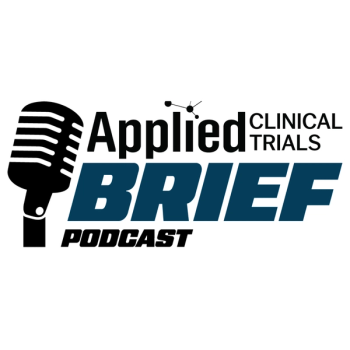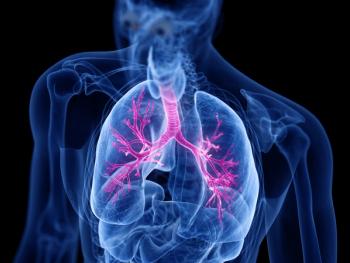Topline findings
- Two Phase III trials met primary and key secondary endpoints, showing MADRS score improvements of 4.9 and 4.5 points vs. placebo.
- Favorable safety profile with minimal metabolic, weight, and movement-related effects.
- Most common adverse events: dizziness, dry mouth, somnolence, nausea, fatigue, and diarrhea.
- Long-term data showed 80% response and 65% remission at six months.
- Marks Caplyta’s fourth FDA-approved indication, expanding its use in neuropsychiatric disorders.
The FDA has approved Caplyta (lumateperone) as an adjunctive therapy with antidepressants for the treatment of major depressive disorder (MDD) in adults, marking the medication’s fourth indication.1
Caplyta’s most recent FDA approval is based on positive results from two Phase III clinical trials: Study 501 (NCT04985942) and Study 502 (NCT05061706). Both studies met their primary endpoint and key secondary measures, demonstrating a significant improvement in depression symptoms.
Approval based on positive results across Phase III program
Study 501 and Study 502 are both global, double-blind, placebo-controlled trials. Their patient populations were comprised of those with a primary diagnosis of MDD who also had an inadequate response to ongoing antidepressant therapy.
Results across both trials showed:
- Caplyta added to an antidepressant achieved significant improvement in Montgomery-Asberg Depression Rating Scale (MADRS) total score versus placebo, with separations of 4.9 and 4.5 points (effect sizes 0.61 and 0.56).
- Caplyta demonstrated a favorable safety and tolerability profile, including minimal metabolic, weight, and movement-related effects.
- The most common adverse events (≥5% and ≥2× placebo) were dizziness, dry mouth, somnolence/sedation, nausea, fatigue, and diarrhea.
- Metabolic and weight changes were comparable to placebo, and rates of extrapyramidal symptoms were low.
In a press release, Roger S. McIntyre, MD, FRCPC, professor of psychiatry and pharmacology, University of Toronto, said: “Depression is a complex disorder that affects each person differently, underscoring the urgent need for a range of effective and well-tolerated treatment options. “For people who are still experiencing lingering depressive symptoms while on an antidepressant, adding Caplyta to a patient’s treatment regimen may offer early improvement, with the potential for remission—the ultimate goal of treatment.”
Long-term data reinforce Caplyta’s efficacy
Caplyta was also evaluated in Study 503 (NCT05061719), an open-label extension safety trial. Data from the 26-week study showed that 80% of patients responded to treatment and 65% of patients experienced remission at six months.
- Study 503 evaluated the long-term safety of adjunctive Caplyta 42 mg in patients who completed Studies 501 or 502.
- The primary endpoint assessed safety and tolerability, including adverse events, extrapyramidal symptoms, suicidality, and changes in labs, vitals, and electrocardiogram measures.
- The secondary endpoint evaluated improvement or maintenance of depressive symptoms via changes in MADRS total and Clinical Global Impression Scale-Severity index (CGI-S) scores from baseline to week 26.
In July, Johnson & Johnson submitted a supplemental New Drug Application (sNDA) to the FDA with long-term data for Caplyta in the prevention of relapse in schizophrenia. Research in other neuropsychiatric and neurological disorders is ongoing.
Earlier FDA approval for bipolar disorder
Caplyta was approved by the FDA in December 2021 for the treatment of depressive episodes associated with bipolar I or II disorder in adults, as monotherapy and as adjunctive therapy with lithium or valproate.2
This earlier approval was based on data from two Phase III studies: Study 404 (NCT03249376) which evaluated Caplyta as monotherapy, and Study 402 (NCT02600507) which evaluated Caplyta alongside lithium or valproate.
Data from both trials showed:
- Caplyta 42 mg achieved statistically significant improvements over placebo in MADRS total score change at week 6.
- The drug also demonstrated a statistically significant improvement in the key secondary endpoint measuring clinical global impression of bipolar disorder.
- Caplyta® demonstrated a favorable safety and tolerability profile consistent with prior schizophrenia studies.
- The most common adverse reactions (≥5% and ≥2× placebo) were somnolence/sedation, dizziness, nausea, and dry mouth.
- Mean changes in weight, fasting glucose, cholesterol, triglycerides, and LDL levels were comparable to placebo.
References
1. FDA approval of CAPLYTA® (lumateperone) has the potential to reset treatment expectations, offering hope for remission in adults with major depressive disorder. News release. Johnson & Johnson. November 6, 2025. Accessed November 7, 2025. https://www.jnj.com/media-center/press-releases/fda-approval-of-caplyta-lumateperone-has-the-potential-to-reset-treatment-expectations-offering-hope-for-remission-in-adults-with-major-depressive-disorder
2. Intra-Cellular Therapies Announces U.S. FDA Approval of CAPLYTA® (lumateperone) for the Treatment of Bipolar Depression in Adults. News release. Intra-Cellular Therapies. December 20, 2021. Accessed November 7, 2025. https://www.globenewswire.com/news-release/2021/12/20/2355071/0/en/Intra-Cellular-Therapies-Announces-U-S-FDA-Approval-of-CAPLYTA-lumateperone-for-the-Treatment-of-Bipolar-Depression-in-Adults.html





